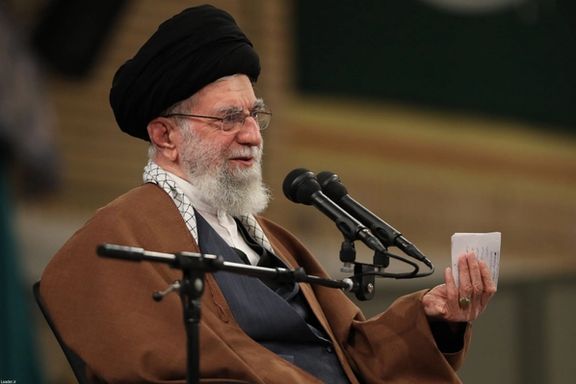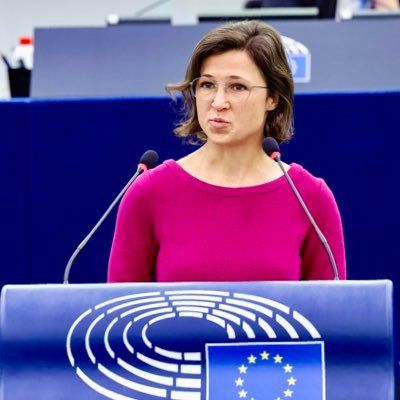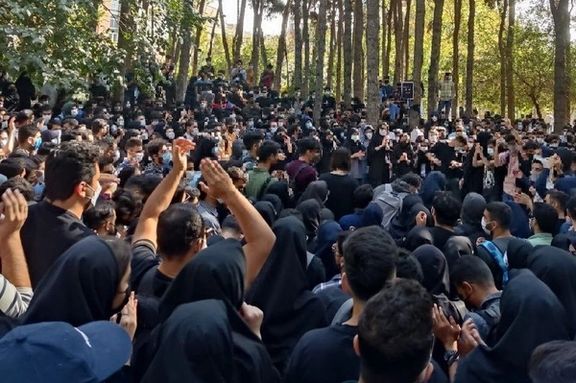Rumors Of Possible Khamenei Meeting With Zahedan Victims' Families

Supreme Leader Ali Khamenei may meet with some of the families of the victims of Bloody Friday, the massacre that killed over 120 civilians in the wake of Mahsa Amini's death.

Supreme Leader Ali Khamenei may meet with some of the families of the victims of Bloody Friday, the massacre that killed over 120 civilians in the wake of Mahsa Amini's death.
Halvash, which specializes in news from Sistan and Baluchestan Province where the massacre of dozens of civilians happened last year, suggested that Iranian security forces are seeking the assistance of trusted and influential local figures for the potential meeting in a bid to quash further unrest.
The tentative date for the meeting is rumored to be September 11 in Tehran, according to Mostafa Mahami, a representative of Khamenei in Sistan and Baluchestan Province, with the government using promises of compensation and security to encourage participation.
During the suppression of the September 30 protests, known as Bloody Friday, at least 123 citizens, including women and children, lost their lives due to direct gunfire from military and security forces, with many succumbing to head and chest injuries.
The Sunni Friday Prayer Imam of Zahedan, Mowlavi Abdolhamid, persistently called for an investigation into the massacre and the prosecution of those responsible. However, to date, no one has been charged or tried in connection with the incident.
As the first anniversary of the nationwide uprising against the Islamic Republic, sparked by the government's killing of Mahsa Amini, approaches, the government has intensified pressure on families of victims seeking justice to stay quiet and refrain from further protest.

Calls to shut down an Iran-linked mosque are growing among Iranians in Finland after the Islamic center admitted that one of its imams snatched a protester’s cellphone.
Parvin Shokri, an Iranian protest organizer based in Helsinki, was returning from an anti-regime demonstration on April 24, when her cellphone was seized by a stranger in the street. She was streaming live on Instagram, something the snatcher was not aware of. As the footage shows, he grabbed the phone, ran away for nearly a minute and while panting took a peek at the phone screen, making his face seen by Shokri’s followers.
Upon seeing his face on the phone screen, the snatcher decided to bury the phone in a nearby lawn in eastern Helsinki, where Shokri would ultimately find it via geolocation, she told Iran International.
The protester, who has been an active organizer of anti-regime events in Finland, immediately reported the matter to the police, triggering an an ongoing investigation. She also started spreading the word by talking to Finnish and Persian media, saying that the man, who appeared on her Instagram Live video, is actually Behrouz Hosseinpour, an imam connected to Resalat Islamic center in Helsinki.
Shokri said that she “did not even know” the man before the incident, and that she learned of his identity through other anti-regime activists after releasing the footage on social media.
Upon these revelations, Resalat Islamic Community released a statement on its Telegram channel on September 1, admitting that it was indeed Hosseinpour, a “guest speaker,” who grabbed Shokri’s phone. The regime-linked Islamic Community cited her “threats” against members of the mosque as well as attempts to record video of religious events “without permission” as reasons that prompted the imam to act.
After reviewing the recorded video, Shokri noticed that Hosseinpour and another man had been following her prior to the attack and she believes they must have tracked her by following her 11-year-old daughter, who was supposed to meet her at a flea market in eastern Helsinki following the protest.

Shokri, who is originally from the southern Iranian city of Izeh, an epicenter of protests in the Woman, Life, Freedom movement, told Iran International that her daughter also recognized the snatcher as the man who had been following her to and from school for a while.
The Iranian diaspora in Finland has been calling for a shutdown of the center, arguing that similar to many other so-called Islamic centers such as the ones in Frankfurt or London, it is funded by Iran’s regime to track and bully Iranian dissidents.

Resalat Islamic Center said in its statement, published in both Finnish and Persian, that Hosseinpour “notified us later,” of the incident, indirectly claiming that it had no prior knowledge of the assault on Shokri. Resalat said that it is a victim of “baseless harassment and threats” by Islamophobes and right-wing activists, who frequently vandalize its premises and intimidate its members.
The statement also described Hosseinpour’s phone grabbing as an attempt to delete videos and photos that the protester had shot to “destroy his character”. Shokri said that her 42-minute live streaming, whose footage is still available on her phone, was merely about the flea market in Helsinki and had nothing to do with the mosque. She also said that this is not the first time she has been assaulted by people allegedly linked to the mosque.
The Islamic center claims that it is independent but has also shrugged off calls by Finno-Iranians to condemn violence perpetrated by Iran’s regime against protesters and activists. According to Helsingin Sanomat, Finland's largest subscription newspaper, Resalat founder Madjid Bahmanpour has “said in several interviews that the mosque received funding from ayatollahs in Iran and Iraq.”
Bahmanpour, whose son, Abbas, is an imam at the Islamic center, is a former member of the Iran's Revolutionary Guards Corps (IRGC), designated as a foreign terrorist organization by the United States. Majid and Abbas Bahmanpour, who are quite well known among the Iranian diaspora in Finland, have been at the helm of the center since 2001 and managed to recruit some 1,500 members, who are mostly first-generation immigrants from Afghanistan, Iraq and Iran.

While an investigation into the matter continues, the Islamic center is also busy holding events in and outside of the mosque, which occasionally draw ire from the Iranian community in the Helsinki area.
Ever since Mahsa Amini’s death in custody of hijab police in Iran on September 16, 2022, Finnish Iranians have held several protests, some in front of the Resalat mosque, calling on the Finnish government to support the movement and shut down the Islamic center. Protests against Iran’s regime in Finland have taken place not only in the capital, but also in much smaller cities, where the number of resident Finno-Iranians is not necessarily large.

Member of the European Parliament Hannah Neumann led a petition addressed to EU Foreign Policy Chief Josep Borrell concerning the prolonged imprisonment of an EU citizen by the Islamic Republic.
In a message on X social network, MEP Neumann along with Cornelia Ernst, Bart Groothuis, and Dietmar Köster, expressed their concerns, stating, "We have some questions regarding the hostage-taking case of Johan Floderus."
Johan Floderus, a 33-year-old member of the EU diplomatic corps, has been held covertly in Iran for over 500 days as part of Iran's hostage diplomacy, as reported by The New York Times. Floderus was arrested at Tehran airport in April 2022, during what was described as a private tourist trip with friends.
MEP Neumann said the issue raises concerns for the safety of other EU citizens. "Any European in Iranian captivity is one too many. However, with the arrest of Johan Floderus, the Iranian regime is escalating the situation further and worsening already strained relations. This incident is outrageous and requires prompt clarification," she said.
The letter directed to Josep Borrell seeks answers to critical questions, including how long the EU has been aware of the Swedish citizen's imprisonment in Iran, reasons behind the lack of public communication on this matter, and the measures undertaken by the EU to secure the release of Floderus.
Members of the European Parliament have pressed Josep Borrell for answers, urging him to respond to the inquiries urgently.

Iranian authorities have ordered the prevention of lectures by two former regime officials at the University of Tehran and the University of Science and Research as the regime continues to purge dissident voices from academia.
Reza Salehi Amiri, who previously held key positions in the Ministry of Sports and Youth and chaired the National Olympic Committee, was among those affected. Meanwhile, Brigadier General Hossein Alai, a former commander of the Navy of the Revolutionary Guards, and a former Deputy Minister of Defense, also faced restrictions.
Further exacerbating concerns to academic freedom, reports from human rights media indicate that two professors, Maham Mighani from the Faculty of Drama at the University of Tehran and Sara Malekan from the Faculty of Management at Amir Kabir University, have been expelled from their positions. Mighani had halted his classes in protest against the detention of his students last year, while Malekan had been critical of security measures at her university.
The purge of dissident professors in Iran has gained momentum since the protests associated with the Woman, Life, Freedom movement which began in September. The situation escalated when Professor Ali Sharifi-Zarchi, a member of Sharif University of Technology's bioinformatics and AI Faculty, announced his expulsion on August 26. Sharifi-Zarchi had supported dissident students during nationwide protests that followed Mahsa Amini's tragic death in custody on September 16.
Observers speculate that these dismissals may be a preemptive measure to quell potential campus protests on the upcoming first anniversary of Amini's death.

The Iranian Islamic Propaganda Organization and Hamshahri newspaper have fallen victim to a cyberattack, resulting in temporary disruptions to their online services within Iran.
The hacktivist group known as Edalat-e Ali (Ali's Justice) revealed the attack on their former Twitter account, attributing the downtime to a Distributed Denial of Service (DDoS) assault.
The incident unfolded on Tuesday, commencing at approximately 15:30 Tehran time, and persisted for approximately 90 minutes before normal service was restored. Edalat-e Ali claimed responsibility for the attacks, the primary motivation, the impending anniversary of the tragic death of Mahsa Amini.
DDoS attacks are recognized as one of the more straightforward cyber threats encountered in the digital realm. In such an attack, the target server is inundated with a deluge of traffic, overwhelming its capacity and resulting in temporary service interruptions or unavailability. Their cost-effectiveness has led various groups to incorporate DDoS attacks alongside more intricate cyber operations.
Iran's internet infrastructure has been repeatedly targeted by such attacks in recent years. Notably, in February 2020, a widespread DDoS attack temporarily severed a quarter of Iran's internet traffic, described at the time by Hamid Fattahi, the then-director of the Communications Infrastructure Company, as the "widest-ranging attack experienced in Iran's history."
As a consequence of the extensive nature of these latest attacks and the substantial impact on the country's internet network, the Islamic Republic of Iran was compelled to postpone the planned launch of the Zafar satellite into space, which had been scheduled for the same day.

The Chancellor of Tehran University claims that dissident professors are being sacked because of “ethical issues,” while hardliners say it is a “Revolutionary act.”
“I have full knowledge that some of these individuals were terminated because they had moral issues and have been sued [by alleged victims] but they claim in the media that their termination was politically motivated,”Mohammad Moghimi, Chancellor of Tehran University, told the Iranian Labour News Agency (ILNA) Sunday.
The Ministry of Higher Education has not commented on the recent dismissals of dozens of professors. However, on August 28, the Interior Ministry released a statement denouncing criticism of the expulsions as "media propaganda" and defended the Higher Education Ministry’s "revolutionary action" against “a few professors who were academically sluggish”.
The Interior Ministry's statement also accused the sacked professors who had opposed the crackdown on students during anti-government protests, of "political immorality and media show-off," and of "defiling" the academic arena with their "factional and even anti-national views."

According to the reformist Etemad daily, 52 professors have been removed from their posts at several universities across Iran since President Ebrahim Raisi’s administration took office two years ago. Additionally, the Human Rights Activists News Agency (Hrana) stated last week that at least twenty-four professors have been sacked since mid-July this year.
Etemad claimed, that these professors included those who were “banned from entering their university, banned from teaching, fired, or forced into retirement” under various pretexts including “lacking academic proficiency”.
Some of the professors who have recently been terminated have stated their political beliefs and actions, including signing statements in support of last year’s protests and protesting students, as the reason for their removal from their posts.
Moghimi accused these professors of lying and called their social media statements “extremely unethical”.
Supreme Leader Ali Khamenei has on many occasions stressed that universities must be Islamic and those who are not aligned with the regime should not be allowed to teach. “Do not employ unreliable individuals in universities at any cost,” he said in a speech in July 2015. “There are good professors, employ them,” he added.
Speaking to the reformist Jamaran news website Sunday, prominent reformist politician Mohsen Mirdamadi called the recent surge in the elimination of dissident professors “the second Cultural Revolution”.
Mirdamadi said those behind the purge in universities aim to “silence universities”. “But previous experience shows that this will not happen,” he said.

In 1980, soon after the victory of the Islamic Revolution, the new government’s Cultural Revolutionary Headquarters shut down universities for three years to purge the academia of its challengers and to enforce its own Islamic revolutionary ideology (Islamification) in higher education establishments. During this period, thousands of professors and students were purged for various reasons, including political inclinations and western influences.
In a statement on August 27, the National Union of Iranian University Professors criticized the "profuse meddling" of security bodies in academic affairs and warned about the "gradual decline" of universities.
On August 27, the National Union of Iranian University Professors criticized the "profuse meddling" of security bodies in academic affairs and warned of the "gradual decline" of universities. Dr Mohsen Borhani, a professor of Islamic and criminal law at Tehran University who was dismissed a few months ago for criticizing the regime after the execution of four young protesters, suggested in an August 28 tweet that some professors' dismissals might be due to "illegal orders" by the National Security Council (NSC), headed by Ahmad Vahidi, the interior minister. "Universities and the country will be managed like military barracks when someone from the military becomes interior minister," Borhani remarked.






